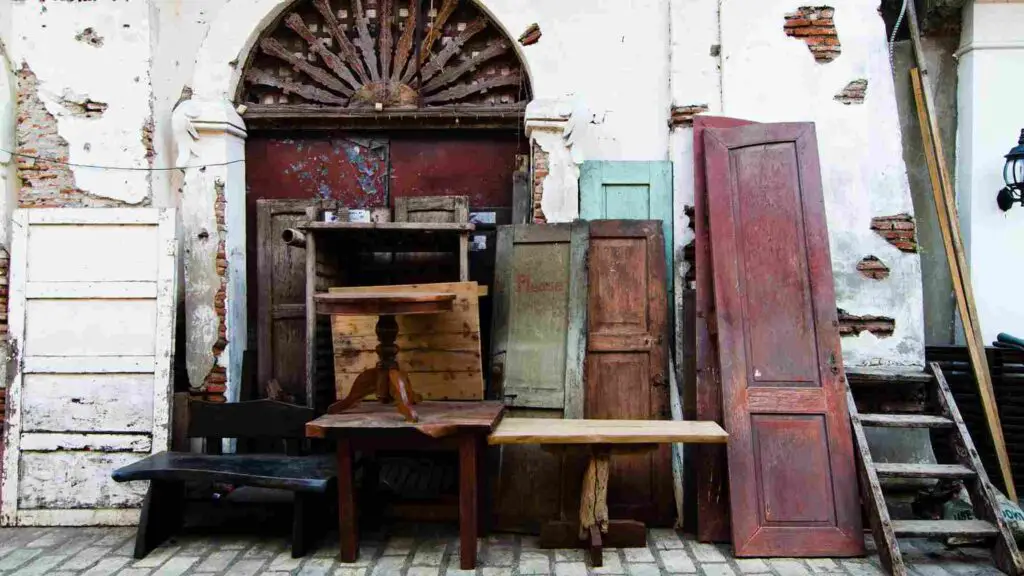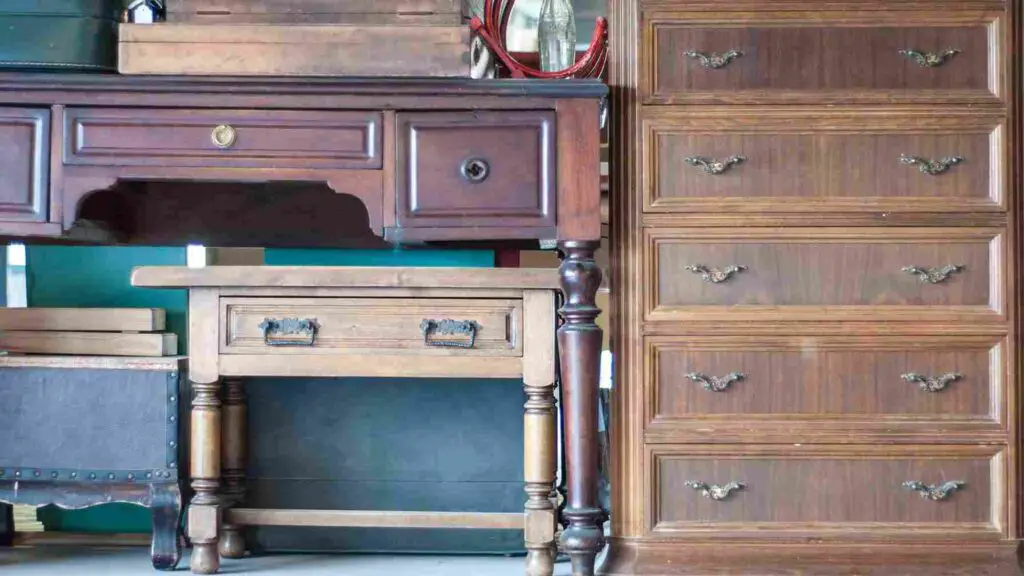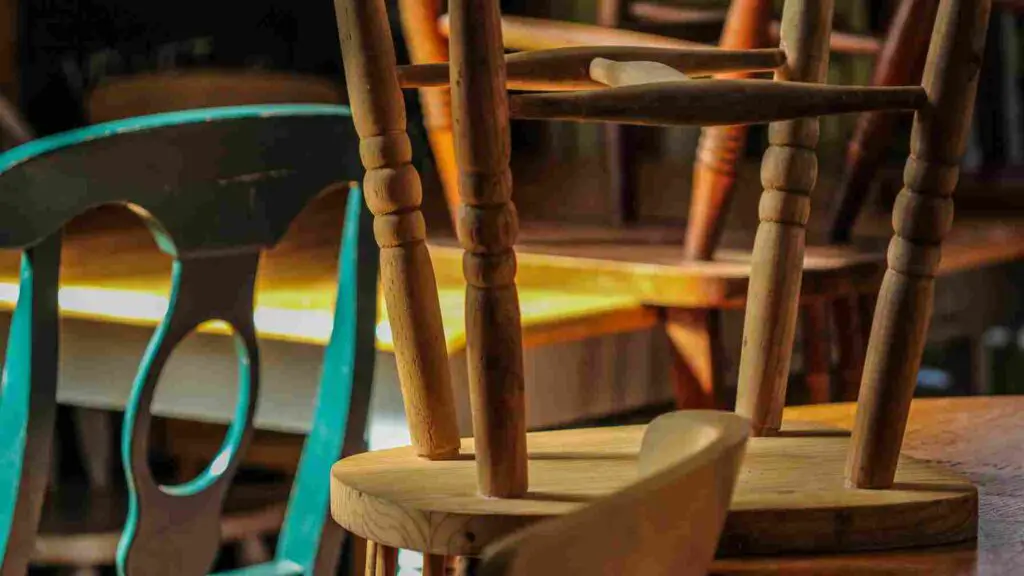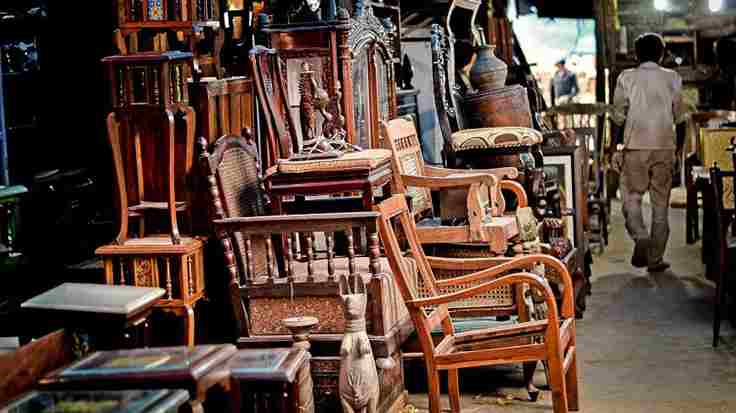Antique furniture
Antique furniture refers to pieces of furniture that are more than 100 years old. These pieces often have a rich history and are prized for their unique character, quality craftsmanship, and durability. From grand Georgian desks to delicate Victorian settees, antique furniture encompasses a wide range of styles and periods. Whether you’re drawn to the opulence of Art Deco or the understated elegance of Edwardian design, there’s an antique piece to suit every taste and budget. In this article, we’ll explore the history and appeal of antique furniture, as well as provide tips on how to care for and find these timeless pieces.
Definition of antique furniture
Antique furniture is defined as any piece of furniture that is more than 100 years old. This includes tables, chairs, desks, dressers, and other types of furniture that were made in the past and have survived to the present day. Antique furniture is often prized for its unique character, quality craftsmanship, and durability. It may be made from a variety of materials, including wood, metal, glass, and upholstery, and can be found in a range of styles and periods.The term “antique” is often used to distinguish these older pieces from newer, mass-produced furniture. Antique furniture is often considered more valuable than newer pieces due to its rarity, historical significance, and craftsmanship. Some antique furniture is highly sought after by collectors, while others are prized for their aesthetic value and ability to add character to a room. Regardless of their specific purpose, antique furniture pieces are often treasured for their beauty, durability, and cultural significance.

History of antique furniture
The history of antique furniture spans hundreds of years and encompasses a wide range of styles and periods. Early antique furniture was often made by hand using traditional techniques, and was crafted from materials such as wood, stone, and metal. As furniture-making techniques evolved, so too did the styles and materials used in furniture production.One of the earliest styles of antique furniture is ancient Egyptian furniture, which was made from materials such as wood, stone, and bronze. In ancient Rome, furniture was often made from marble and other luxurious materials. During the Middle Ages, furniture was primarily made from wood, with pieces such as chests and chairs being common. In the Renaissance period, furniture became more ornate and decorative, with the use of inlaid wood and intricate carvings becoming popular.In the 18th and 19th centuries, the Industrial Revolution led to the mass production of furniture, which in turn led to the development of various styles such as Georgian, Victorian, and Edwardian. In the 20th century, furniture styles such as Art Deco and Mid-Century Modern emerged, and continue to be popular today.Today, antique furniture is highly sought after by collectors and those looking to add character and history to their home. Many antique pieces are considered works of art, and are valued for their unique design and craftsmanship. Despite the passage of time, antique furniture remains an enduring part of our cultural history, and continues to be appreciated for its beauty and timeless appeal.
Types of antique furniture
There are many types of antique furniture, each with its own unique style and characteristics. Some of the most popular types of antique furniture include:
- Georgian: Named after the kings of England who reigned during this period (1714-1830), Georgian furniture is known for its symmetrical design and use of mahogany and other hardwoods.
- Victorian: Victorian furniture (1837-1901) is known for its ornate design, with pieces often featuring intricate carvings and decorative elements. Common materials include walnut and rosewood.
- Edwardian: Edwardian furniture (1901-1910) is characterized by its lighter, more delicate design, with an emphasis on functionality and comfort. Common materials include oak and mahogany.
- Art Deco: Art Deco furniture (1920s-1930s) is known for its bold, geometric design and use of materials such as chrome, glass, and lacquer.
- Mid-Century Modern: Mid-Century Modern furniture (1940s-1970s) is characterized by its sleek, minimalist design and use of materials such as wood, metal, and plastic.
Antique furniture can also be classified by its function, such as seating (e.g. chairs, sofas), storage (e.g. chests, cabinets), or tables (e.g. desks, side tables). Regardless of its specific style or function, antique furniture is often prized for its unique character, quality craftsmanship, and cultural significance.
The appeal of antique furniture
Antique furniture has a timeless appeal that continues to draw people in. Some of the reasons why antique furniture is so appealing include:
- Unique character and charm: Antique furniture has a character and charm that is hard to find in newer pieces. Each piece has its own history and story, and no two antique pieces are exactly the same.
- Quality craftsmanship: Many antique pieces were made by hand using traditional techniques, and as a result, they often have a level of craftsmanship that is not found in mass-produced furniture.
- Durability: Antique furniture is often made from high-quality materials and built to last, making it more durable than newer pieces.
- Investment value: Some antique pieces have a high investment value due to their rarity, historical significance, and craftsmanship. Collectors and investors may be willing to pay a premium for certain antique pieces.
In addition to these practical considerations, antique furniture also adds a sense of history and timelessness to a home. It can be a conversation starter and a source of pride for those who own it. Whether you’re drawn to the opulence of Art Deco or the understated elegance of Edwardian design, there’s an antique piece to suit every taste and budget.
Unique character and charm
Antique furniture has a unique character and charm that is hard to find in newer pieces. Each piece has its own history and story, and no two antique pieces are exactly the same. This individuality is part of what makes antique furniture so appealing to collectors and those looking to add character to their home.Antique furniture often has a patina, or aged appearance, that is the result of years of use and wear. This patina gives antique pieces a sense of authenticity and history, and can add warmth and character to a room. In contrast, newer pieces often have a more uniform, factory-made look that lacks the character and individuality of antique pieces.In addition to their unique appearance, antique pieces may also have special features or details that set them apart. For example, an antique chair may have hand-carved embellishments or intricate inlaid woodwork, while an antique desk may have a hidden compartment or other functional features that add to its appeal.Overall, the unique character and charm of antique furniture is what makes these pieces so special and coveted. Whether you’re looking to add a touch of history to your home or simply appreciate the beauty and craftsmanship of antique pieces, there’s no denying the appeal of these timeless treasures.
Quality craftsmanship
One of the reasons why antique furniture is so appealing is its quality craftsmanship. Many antique pieces were made by hand using traditional techniques, and as a result, they often have a level of craftsmanship that is not found in mass-produced furniture.Antique furniture is often made from high-quality materials, such as solid wood, and is built to last. The attention to detail and care that went into the construction of antique pieces is evident in the durability and longevity of these pieces. In contrast, newer pieces may be made from lower-quality materials and may not be built to withstand the same level of wear and tear.In addition to being made from quality materials, antique furniture is often finished by hand, which gives it a level of attention and detail that is not found in newer pieces. For example, an antique table may have a hand-applied finish or hand-carved details that add to its beauty and uniqueness.The quality craftsmanship of antique furniture is what sets these pieces apart and makes them so prized by collectors and those looking to add character and durability to their home. Whether you’re looking for a functional piece of furniture or a decorative accent, antique furniture is a great choice due to its quality craftsmanship and enduring appeal.

Durability
Antique furniture is known for its durability, which is one of the reasons why it is so prized by collectors and those looking to add character to their home. Many antique pieces are made from high-quality materials, such as solid wood, and are built to withstand years of use and wear.The durability of antique furniture is often the result of the care and attention that went into its construction. Many antique pieces were made by hand using traditional techniques, and as a result, they often have a level of craftsmanship that is not found in newer, mass-produced furniture.In addition to being made from quality materials, antique furniture is often finished by hand, which adds to its durability. For example, an antique table may have a hand-applied finish that is more resistant to wear and tear than a factory-applied finish.
Investment value
Some antique furniture has a high investment value due to its rarity, historical significance, and craftsmanship. Collectors and investors may be willing to pay a premium for certain antique pieces, as they can be seen as a long-term investment that will appreciate in value over time.The investment value of antique furniture can vary depending on a number of factors, including the rarity of the piece, the quality of its craftsmanship, and its historical significance. Pieces that are associated with a particular period or style, such as Art Deco or Georgian, may also be more valuable due to their popularity with collectors.In addition to their investment value, antique pieces can also be a good financial investment in the sense that they may hold their value over time. While newer pieces may depreciate in value over time, antique pieces can often maintain or even increase in value due to their rarity and demand.It’s important to note that the investment value of antique furniture is not guaranteed, and it’s important to do your research before making a purchase. However, for those looking to invest in quality pieces that will hold their value over time, antique furniture can be a good choice.
How to care for antique furniture
Antique furniture requires special care to maintain its beauty and longevity. Here are some tips for caring for antique furniture:
- Dust regularly: Use a soft, dry cloth to dust antique furniture on a regular basis. Avoid using water or chemical cleaners, as these can damage the finish or wood.
- Protect from sunlight: Direct sunlight can fade or discolor antique furniture, so it’s important to protect these pieces from direct sunlight. Consider using blinds or shades to block out direct sunlight, or move the furniture to a location that is out of direct sunlight.
- Use coasters and placemats: To protect antique furniture from spills and scratches, use coasters and placemats when placing drinks or dishes on the surface.
- Avoid placing heavy objects on antique furniture: Antique furniture is often delicate and may not be able to support heavy objects. To protect these pieces, avoid placing heavy objects on them.
- Repair and restore as needed: If an antique piece shows signs of wear or damage, consider having it repaired or restored by a professional. This can help to preserve the piece and maintain its value.
By following these simple care tips, you can help to maintain the beauty and longevity of your antique furniture. It’s important to remember that antique pieces require special care due to their age and value, and taking the time to care for these pieces can help to preserve them for future generations.
Cleaning and maintenance tips
Here are some tips for cleaning and maintaining antique furniture:
- Dust regularly: Use a soft, dry cloth to dust antique furniture on a regular basis. This will help to remove dust and dirt that can accumulate on the surface.
- Use a wood cleaner: To clean wood surfaces, use a wood cleaner specifically formulated for antique furniture. Avoid using water or chemical cleaners, as these can damage the finish or wood.
- Wipe up spills immediately: To prevent staining or damage, be sure to wipe up spills on antique furniture immediately. Use a dry cloth or a cloth dampened with a mild cleaner to blot the spill.
- Protect from sunlight: Direct sunlight can fade or discolor antique furniture, so it’s important to protect these pieces from direct sunlight. Consider using blinds or shades to block out direct sunlight, or move the furniture to a location that is out of direct sunlight.
- Use coasters and placemats: To protect antique furniture from spills and scratches, use coasters and placemats when placing drinks or dishes on the surface.
By following these cleaning and maintenance tips, you can help to preserve the beauty and longevity of your antique furniture. Remember to take care when cleaning and maintaining these pieces, as they may be more delicate than newer pieces.
Repair and restoration services
If an antique piece of furniture shows signs of wear or damage, you may want to consider having it repaired or restored by a professional. Repair and restoration services can help to preserve the piece and maintain its value.There are a number of professionals who specialize in repairing and restoring antique furniture, including furniture restorers, conservators, and refinishers. These professionals have the skills and expertise to repair and restore antique furniture, and can often bring these pieces back to their former glory.
The specific repair and restoration services that are available will depend on the type of damage and the needs of the piece. Some common services include:
- Structural repair: This may include repairing broken or loose joints, replacing missing parts, or reinforcing weak areas.
- Surface repair: This may include filling in cracks or scratches, or repairing damage to the finish.
- Refinishing: This process involves stripping the old finish and applying a new finish to the piece. This can be done to restore the original finish or to change the color or style of the piece.
- Cleaning and conservation: This may include removing dirt and grime from the piece, or stabilizing and preserving the piece to prevent further damage.
Repair and restoration services can be expensive, and it’s important to carefully consider the cost and value of the piece before deciding to have it repaired or restored. However, for those looking to preserve and maintain their antique furniture, these services can be a worthwhile investment.
Insurance and storage options
If you own antique furniture, you may want to consider purchasing insurance to protect these valuable pieces. Antique furniture can be expensive to replace, and insurance can provide financial protection in the event of damage or loss.There are a number of insurance options available for antique furniture, including standalone policies or coverage through a home insurance policy. It’s important to carefully review the terms and conditions of any insurance policy to ensure that it meets your needs.
In addition to insurance, proper storage is also important to protect antique furniture. Here are some tips for storing antique furniture:
- Keep furniture out of direct sunlight: Direct sunlight can fade or discolor antique furniture, so it’s important to store these pieces in a location that is out of direct sunlight.
- Avoid extremes of temperature and humidity: Antique furniture can be sensitive to extreme changes in temperature and humidity, so it’s important to store these pieces in a location that is free from these extremes.
- Use protective coverings: If you need to store antique furniture for an extended period of time, consider using protective coverings such as blankets or sheets to protect the piece from dust and dirt.
- Consider a climate-controlled storage unit: If you don’t have a suitable location to store antique furniture in your home, consider renting a climate-controlled storage unit. These units can provide a stable, controlled environment for your antique pieces.
By following these storage tips, you can help to protect your antique furniture and ensure that it is preserved for future generations.
Where to find antique furniture
There are a number of places where you can find antique furniture, including:
- Antique stores: Antique stores specialize in selling antique and vintage pieces, and can be a good place to find a wide range of antique furniture.
- Estate sales: Estate sales are held when someone is selling the contents of a home, and can be a good place to find antique furniture.
- Online marketplaces: There are a number of online marketplaces, such as eBay and Etsy, where you can find antique furniture for sale.
- Auctions: Auctions can be a good place to find antique furniture, but it’s important to do your research and be prepared to bid for the pieces you want.
- Flea markets: Flea markets can be a good place to find antique furniture, but it’s important to be prepared to negotiate and haggle for the pieces you want.
It’s important to do your research and be patient when looking for antique furniture. It may take some time to find the perfect piece, but the effort will be worth it when you find a beautiful, unique antique piece for your home.
Antique stores and dealers
Antique stores and dealers are a common place to find antique furniture. These businesses specialize in selling antique and vintage pieces, and can be a good place to find a wide range of antique furniture.Antique stores and dealers often have a large selection of pieces to choose from, and may have a focus on a particular style or period of antique furniture. Some antique stores and dealers may also offer repair and restoration services.When shopping at an antique store or dealer, it’s important to do your research and know what you’re looking for. It can also be helpful to have a budget in mind, as antique furniture can vary greatly in price.It’s also important to be aware that antique stores and dealers may mark up the prices of antique pieces, so it’s important to be prepared to negotiate and haggle for the pieces you want.Overall, antique stores and dealers can be a great place to find antique furniture, but it’s important to do your research and be prepared to negotiate to get the best deal.

Auctions and estate sales
Auctions and estate sales can be a good place to find antique furniture, but it’s important to be prepared and do your research before attending these events.Auctions are events where items are sold to the highest bidder, and can be a good place to find antique furniture. Auctions can be held in person or online, and may specialize in a particular type of antique furniture or have a more diverse selection. It’s important to do your research and be prepared to bid for the pieces you want.Estate sales are held when someone is selling the contents of a home, and can be a good place to find antique furniture. Estate sales can be held in person or online, and may have a wide selection of pieces to choose from. It’s important to be prepared to negotiate and haggle for the pieces you want.Overall, auctions and estate sales can be a good place to find antique furniture, but it’s important to do your research and be prepared to bid or negotiate for the pieces you want.
Online marketplaces
There are a number of online marketplaces where you can find antique furniture for sale, including eBay and Etsy. These marketplaces offer a wide selection of antique furniture, and can be a convenient way to shop for these pieces from the comfort of your own home.When shopping for antique furniture on an online marketplace, it’s important to do your research and be aware of the risks associated with online shopping. It’s a good idea to carefully review the seller’s reputation and the condition of the piece before making a purchase.It’s also important to be aware that the prices of antique furniture on online marketplaces may vary widely, and it may take some time to find the perfect piece at a price that you’re willing to pay.Overall, online marketplaces can be a convenient and cost-effective way to find antique furniture, but it’s important to do your research and be aware of the risks associated with online shopping.

Antique furniture is a timeless and enduring part of home decor, offering unique character, charm, and quality craftsmanship that sets it apart from newer pieces. Whether you’re a collector or simply appreciate the beauty and nostalgia of antique furniture, these pieces are sure to enhance any home.
There are many types of antique furniture to choose from, including chairs, tables, desks, and more. Each piece has its own unique character and charm, and can be a great investment due to its potential durability and value.
To care for antique furniture, it’s important to handle the pieces with care, clean and dust them regularly, and consider having them repaired or restored by a professional if necessary. With proper care, antique furniture can provide years of enjoyment and add character and nostalgia to your home.
Overall, antique furniture is a great choice for those looking to add timeless beauty and character to their home. With its unique charm and quality craftsmanship, antique furniture is sure to be a cherished addition to any home.
If you are interested know about Antique Tools Read More

Leave a Reply